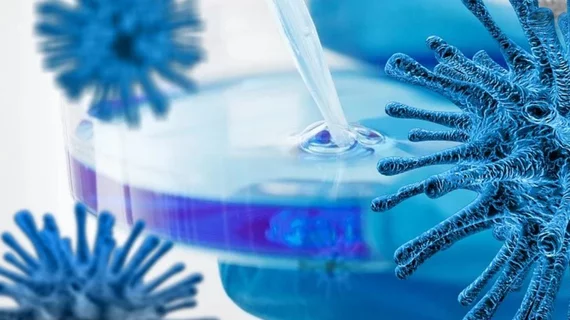COVID-19 recoveries: The evolution of CT abnormalities from onset to discharge
Imaging experts continue to gain a better understanding of the lung abnormalities seen in the computed tomography scans of patients with the coronavirus. And a new letter to the editor builds upon that research, tracing the evolution of such findings from symptom onset to hospital discharge.
That research was completed by a group of Chinese researchers and published March 13 in the Korean Journal of Radiology. The team analyzed five patients who came to a single hospital with symptoms of COVID-19, travel history to Wuhan and positive real-time-polymerase chain-reaction test results.
Each individual was between 20-55 years old and had been admitted to Taizhou Hospital of Wenzhou Medical University between Jan. 17 and Jan. 29. Focusing on the imaging-based indications of the virus, each patient’s initial chest CT demonstrated abnormalities; typically, these were multiple ground-glass opacities with or without patchy consolidation. Four in the group had bilateral involvement with the subpleural regions most commonly involved.
A number of other radiologically-focused studies have reported ground-glass opacities in patients with suspected COVID-19. A recent study of nine patients published earlier this month found bilateral involvement in all but one patient.
Qiulian Sun, MD, with Taizhou’s Department of Radiology and colleagues reported that each person was given antiviral treatment and four also received antibiotics.
“All five patients showed marked improvement in chest radiographic abnormalities after active intervention,” Sun and colleagues wrote in the letter.
In two patients, early and mid-term follow-up CTs (up to five days in the hospital) yielded an increase in the extent of consolidation and density; one individual, however, showed the opposite, but had more ground-glass opacities.
Late follow-up scans (16-32 days in the hospital) determined that one person had no more consolidation, with the other four showing significant reductions. In one patient, the authors noted, “small amounts of patchy ground-glass opacities and fibrous stripes in bilateral lungs still persisted.”
Each patient recovered from the virus and was discharged based on a number of clinical indications, including “significant improvement of acute exudative lesions” on chest CT imaging, the authors concluded.

